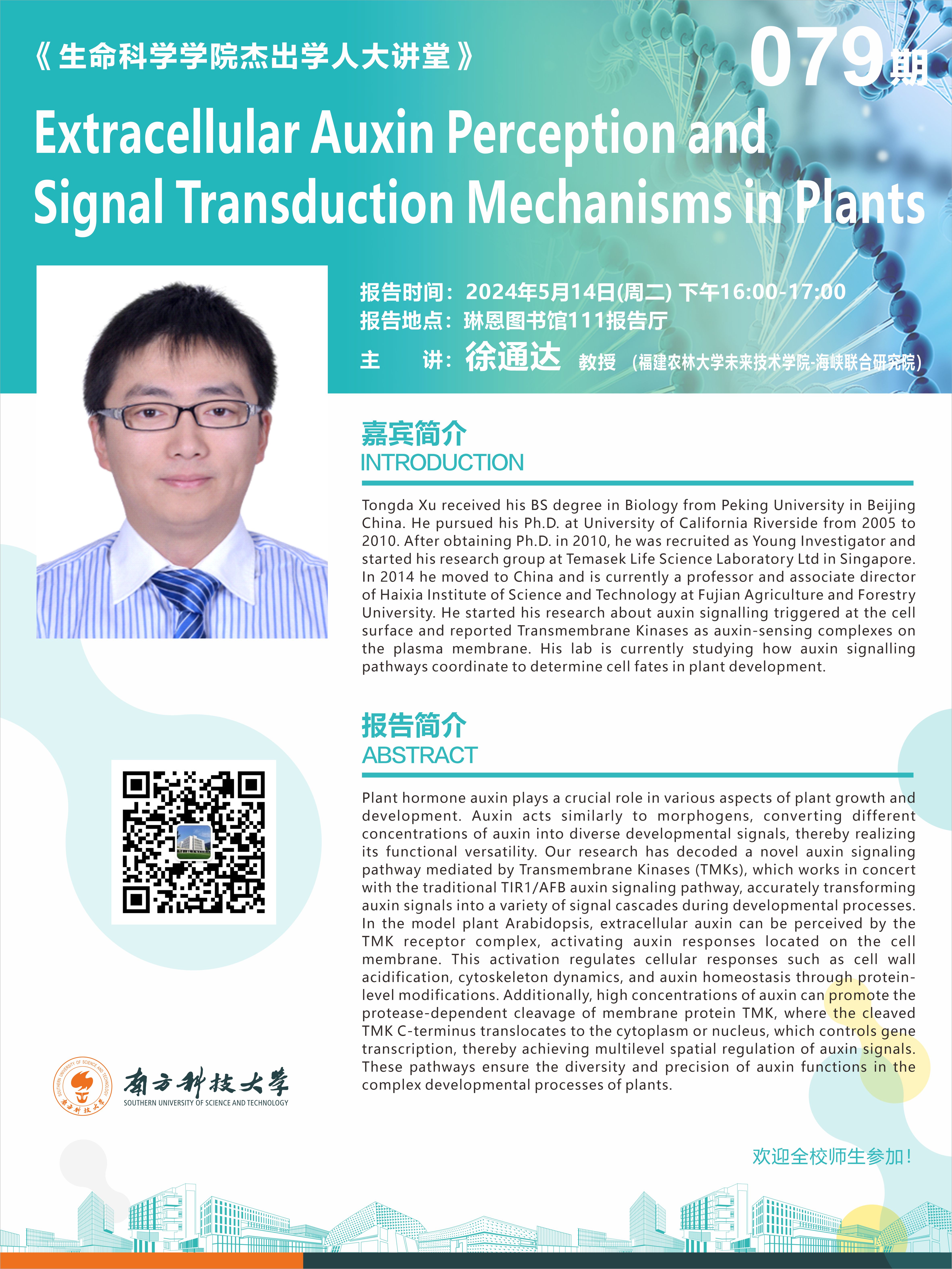
主讲人: 徐通达 教授(福建农林大学未来技术学院-海峡联合研究院)
时间: 2024年5月14日(周二)下午16:00-17:00
地点: 琳恩图书馆111报告厅
题 目:Extracellular Auxin Perception and Signal Transduction Mechanisms in Plants
主 讲:徐通达 教授
时 间:2024年5月14日(周二)下午16:00-17:00
地 点:琳恩图书馆111报告厅
嘉宾简介:
Tongda Xu received his BS degree in Biology from Peking University in Beijing China. He pursued his Ph.D. at University of California Riverside from 2005 to 2010. After obtaining Ph.D. in 2010, he was recruited as Young Investigator and started his research group at Temasek Life Science Laboratory Ltd in Singapore. In 2014 he moved to China and is currently a professor and associate director of Haixia Institute of Science and Technology at Fujian Agriculture and Forestry University. He started his research about auxin signalling triggered at the cell surface and reported Transmembrane Kinases as auxin-sensing complexes on the plasma membrane. His lab is currently studying how auxin signalling pathways coordinate to determine cell fates in plant development.
报告摘要:
Plant hormone auxin plays a crucial role in various aspects of plant growth and development. Auxin acts similarly to morphogens, converting different concentrations of auxin into diverse developmental signals, thereby realizing its functional versatility. Our research has decoded a novel auxin signaling pathway mediated by Transmembrane Kinases (TMKs), which works in concert with the traditional TIR1/AFB auxin signaling pathway, accurately transforming auxin signals into a variety of signal cascades during developmental processes. In the model plant Arabidopsis, extracellular auxin can be perceived by the TMK receptor complex, activating auxin responses located on the cell membrane. This activation regulates cellular responses such as cell wall acidification, cytoskeleton dynamics, and auxin homeostasis through protein-level modifications. Additionally, high concentrations of auxin can promote the protease-dependent cleavage of membrane protein TMK, where the cleaved TMK C-terminus translocates to the cytoplasm or nucleus, which controls gene transcription, thereby achieving multilevel spatial regulation of auxin signals. These pathways ensure the diversity and precision of auxin functions in the complex developmental processes of plants.